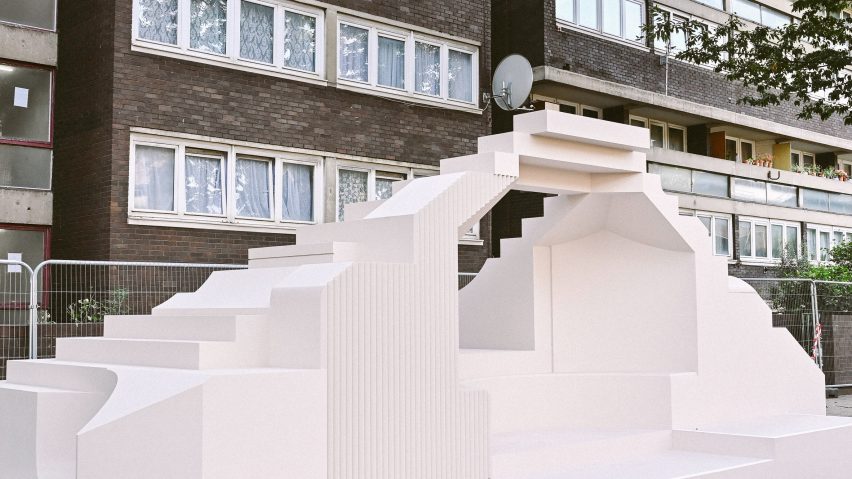
Sumayya Vally creates Notting Hill Carnival pavilion with "a diasporic logic"
For this year's Notting Hill Carnival, South African architect Sumayya Vally created a pavilion made up of fragmented parts that only came together during the course of the parade.
The Counterspace principal collaborated with local artist Alvaro Barrington to create the pyramid-shaped structure, which offered a place to sit and rest during the three-day-long event in west London.
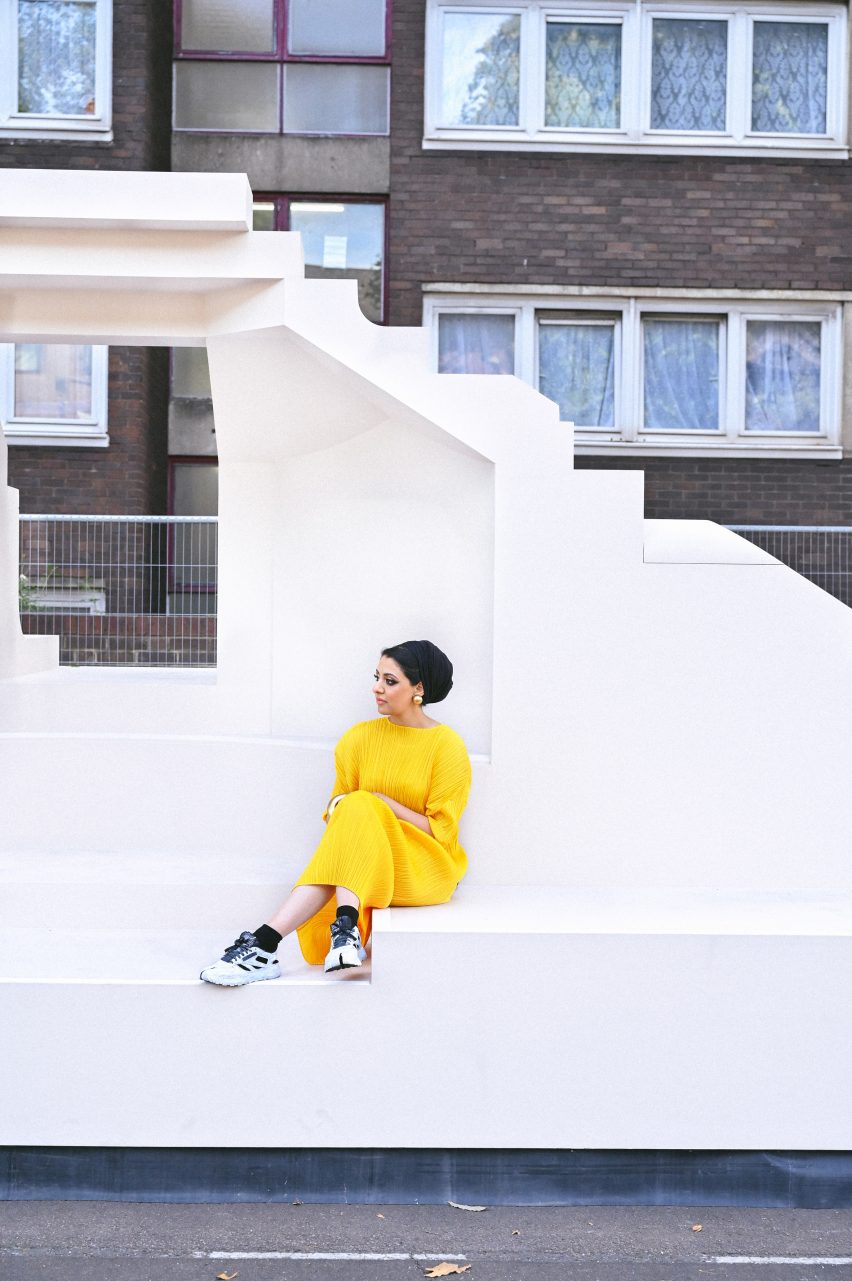
Her intention was to create a design with "a diasporic logic", reflecting the nature of Notting Hill Carnival as a place of gathering for London's Afro-Caribbean community.
This led her to design the pavilion as an incomplete structure, with four different fragments given to members of the community. These fragments were carried in the carnival procession before being put into place.
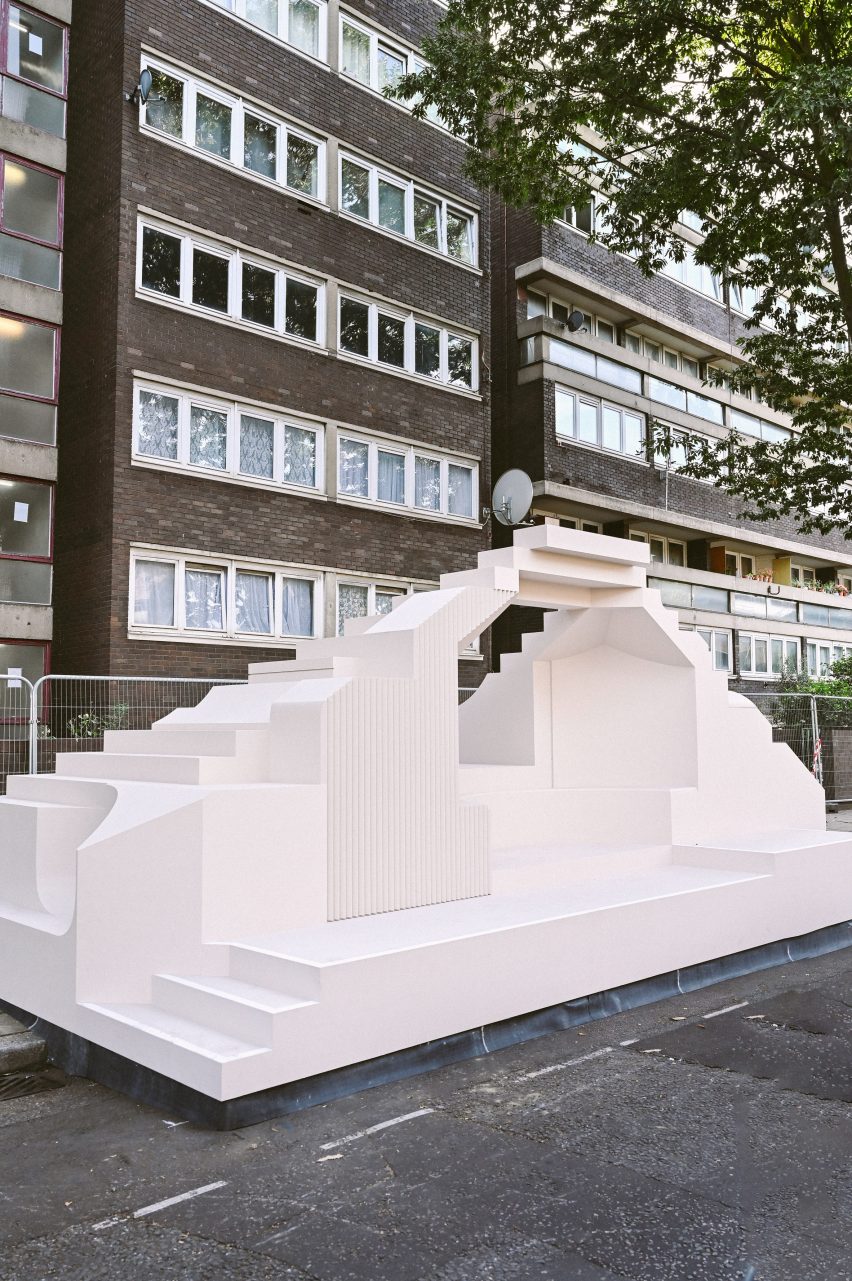
"I wanted the structure to have something of a diasporic logic in how it works," Vally told Dezeen. "So we decided to have parts that can live separately but have moments where they can come together."
The project builds on the research that Vally began when designing the 2021 Serpentine Pavilion, which used architectural fragments to celebrate the history of London's migrant communities.
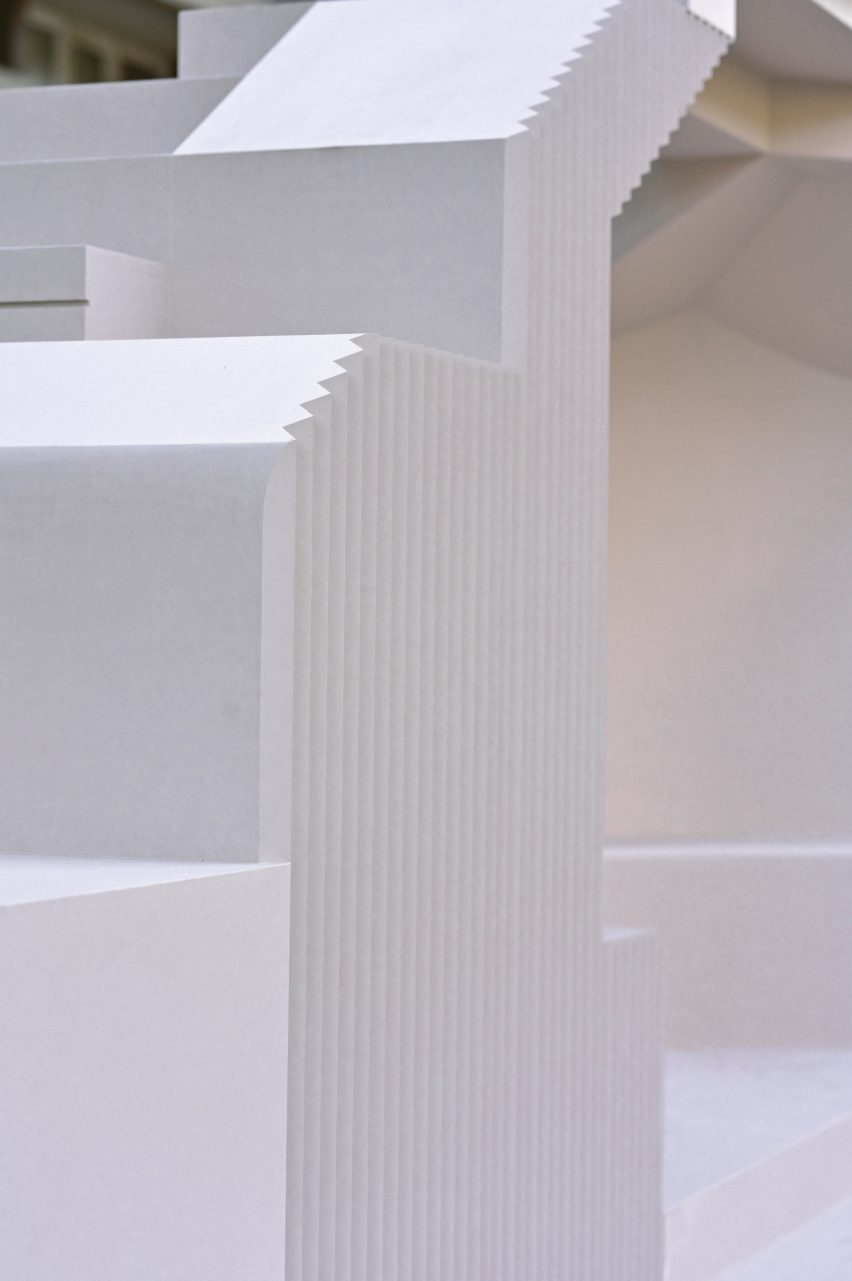
This is also what led Barrington to suggest the collaboration, believing that Vally could create a pavilion to represent different voices and identities.
"The impetus for this was always about immigration and why people leave their homes to go to new lands," he said.
"When I saw Sumayya's pavilion at the Serpentine last year, I was so moved," he added. "There was a way people engaged with it. It felt truly open."
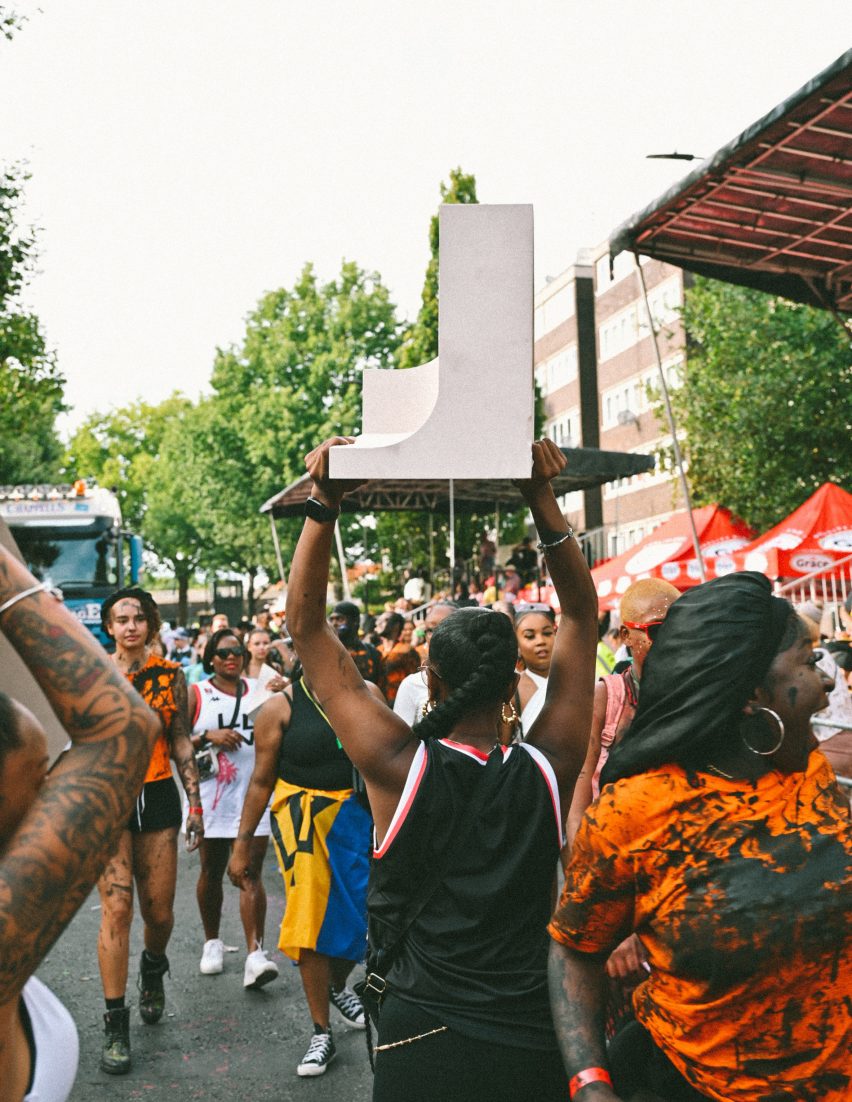
For the carnival pavilion, Vally looked closely at buildings of significance to Notting Hill's Afro-Caribbean community, including The Tabernacle arts venue and the now-defunct Mangrove restaurant, which served as a historic symbol of Black resistance.
Her design borrows elements from these structures, resulting in a form that uses different embellishments and geometries to create seating areas and a small stage for performance.
"In its form, it traces expansive geographies, land and sea, reflecting and abstracting spaces and forms," said Vally.
The architect also references some of the culture and symbolism of carnivals across Africa, the Caribbean and the diaspora, which often incorporate ideas of offering and worship.
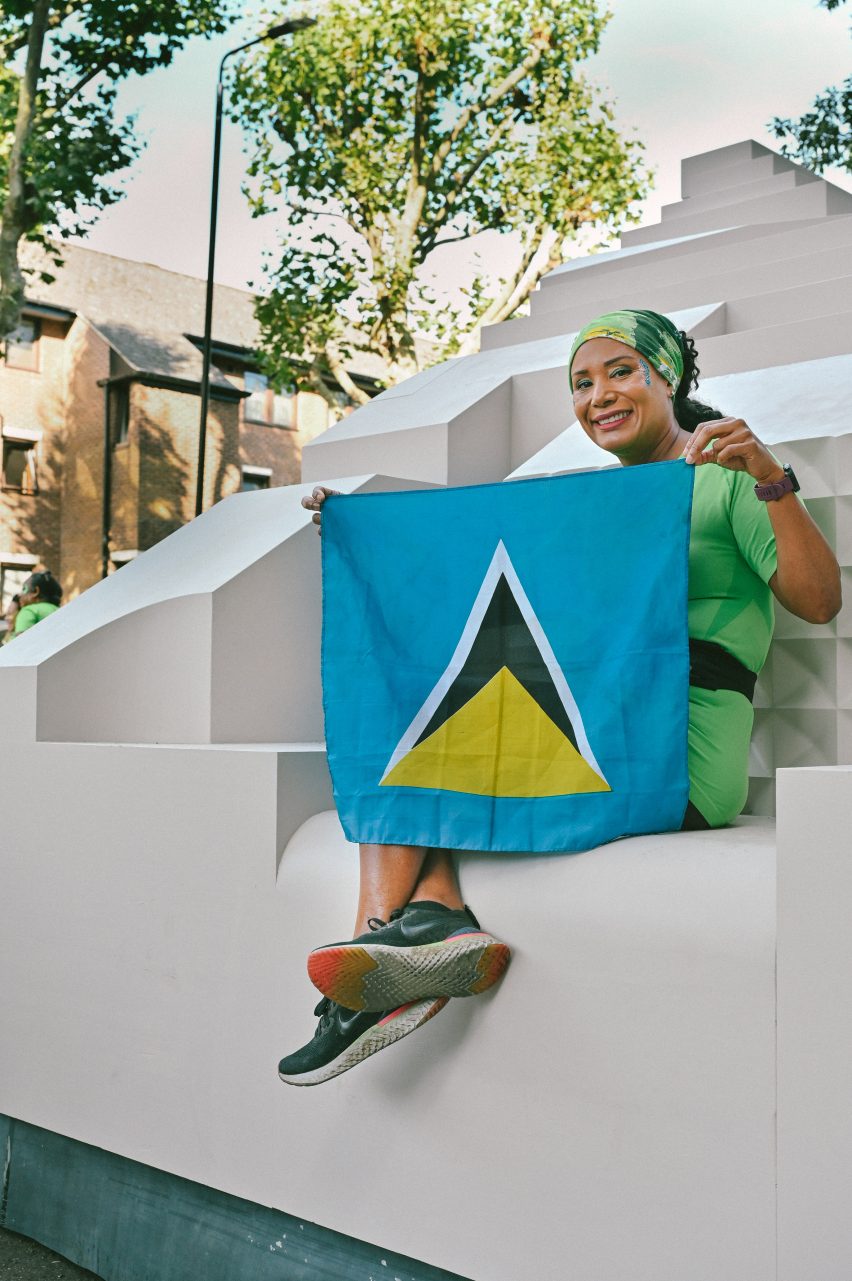
In particular, the fragmented elements draw inspiration from Brazil's festival of Yemanjá.
Four Notting Hill community members were invited to carry elements of the pavilion in the procession, just as attendees to the Brazilian festival carry flowers and gifts to offer to the Candomblé goddess of the sea.
"A diasporic logic implies an extended set of geographies," said Vally. "Each of the pieces in this structure draws on and works to honour characters, geographies and mythologies associated with carnivals from places further away."
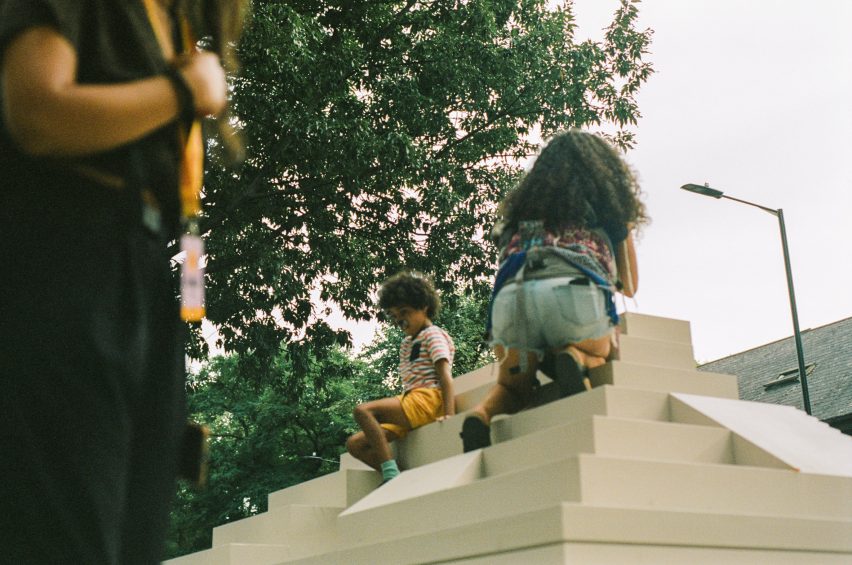
The Notting Hill Carnival pavilion was installed on Great Western Road for the duration of the August bank holiday weekend event.
Vally hopes the project helped to enhance Londoners' understanding of the carnival as a platform for cultural and artistic production.
"This project is so much about the process," she added. "In the act of making the project and in its procession, a series of conversations, interactions and engagements were developed, which I hope will continue long after the project."
The photography is by Lou Jasmine.